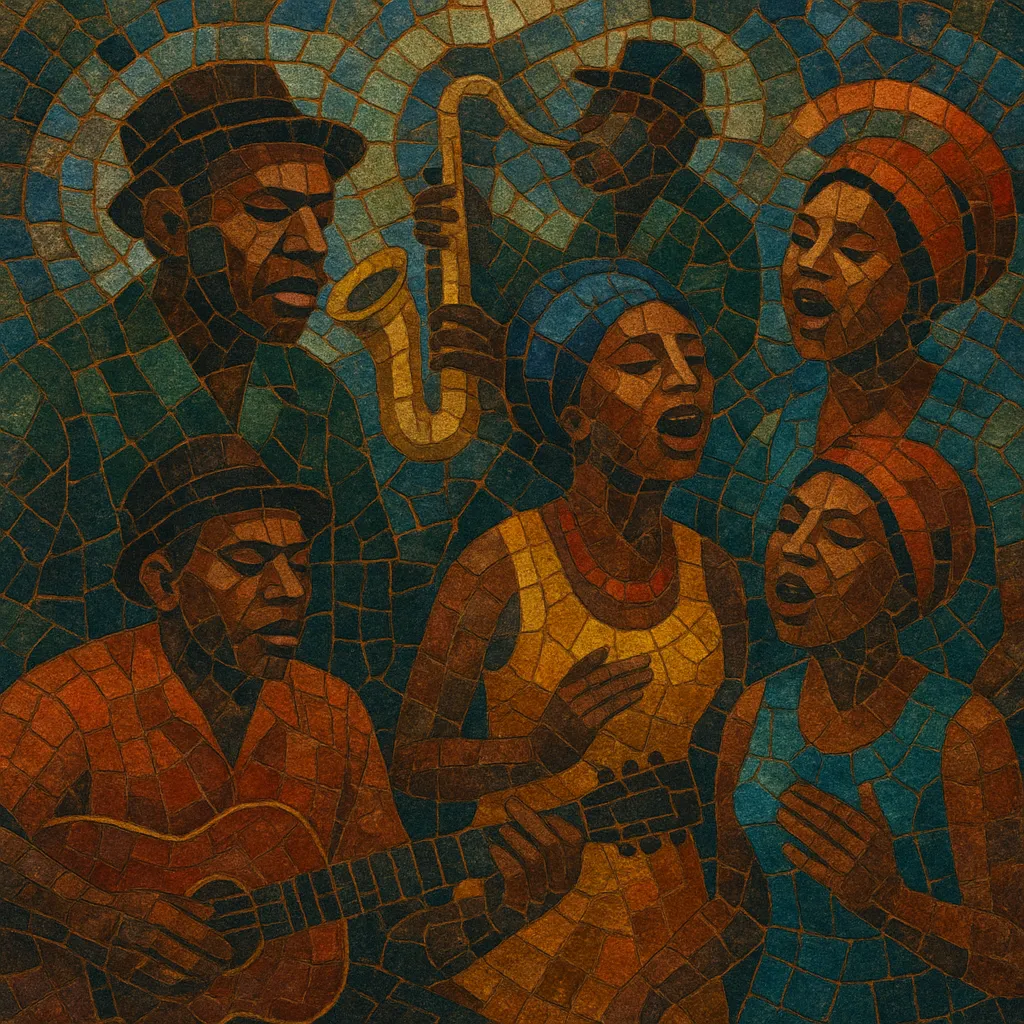Mbaqanga is a South African township dance music that crystallized in the early 1960s, blending marabi piano-jazz harmonies, kwela’s lilting rhythms, and traditional Zulu/Sotho vocal styles with electric guitars, bass, saxophones, and drum kit.
Characterized by a driving 4/4 shuffle, cyclical bass ostinati, choppy off‑beat rhythm guitar, tight horn riffs, and vibrant call-and-response vocals, it is both earthy and urbane—music made for public dances, shebeens, and radio alike. The term “mbaqanga” (a Zulu word for a steamed maize bread) came to signify a homegrown, filling, and proudly local sound that nonetheless drew on global jazz and R&B currents.
A signature substyle, mgqashiyo, features a gravel-voiced male lead (“the groaner”) backed by a bright female chorus and a virtuoso electric band, epitomizing the music’s propulsive, joyful energy.
Mbaqanga emerged in the townships around Johannesburg—especially Soweto and Alexandra—where dance bands fused marabi’s cyclical harmonies and kwela’s lilting grooves with electric instrumentation and local choral traditions. By the early 1960s, studio band culture coalesced at labels such as Gallo’s Mavuthela division under producer Rupert Bopape. The Makgona Tsohle Band (with figures like Marks Mankwane and West Nkosi) provided a definitive electric rhythm section, while vocal groups such as the Mahotella Queens and the gravel-voiced Simon “Mahlathini” Nkabinde helped codify the mgqashiyo substyle.
Through constant radio play and a prolific singles market, mbaqanga became South Africa’s dominant urban dance sound. The combination of punchy sax leads, interlocking guitar figures, and call‑and‑response vocals turned it into reliable party music. In the 1970s, acts like The Soul Brothers introduced a smoother “soul mbaqanga,” absorbing American soul and R&B while retaining township grooves.
Despite systemic censorship, segregation, and restricted touring circuits, mbaqanga thrived in shebeens, community halls, and on urban radio. Its lyrics often addressed daily life, love, humor, and subtle social commentary, providing resilience and joy amid harsh political realities.
While local tastes shifted toward disco and later bubblegum, mbaqanga enjoyed an international revival in the mid-to-late 1980s as Mahlathini & The Mahotella Queens re-formed and toured worldwide. Global interest in Southern African music—sparked in part by the broader “world music” moment—brought renewed attention to mbaqanga’s virtuosity and cultural importance.
Mbaqanga’s rhythmic language, vocal arranging, and electric township band format shaped subsequent South African styles—from bubblegum to kwaito—and influenced neighboring scenes such as Zimbabwean sungura. Its core groove remains a foundational template for Southern African dance music.


